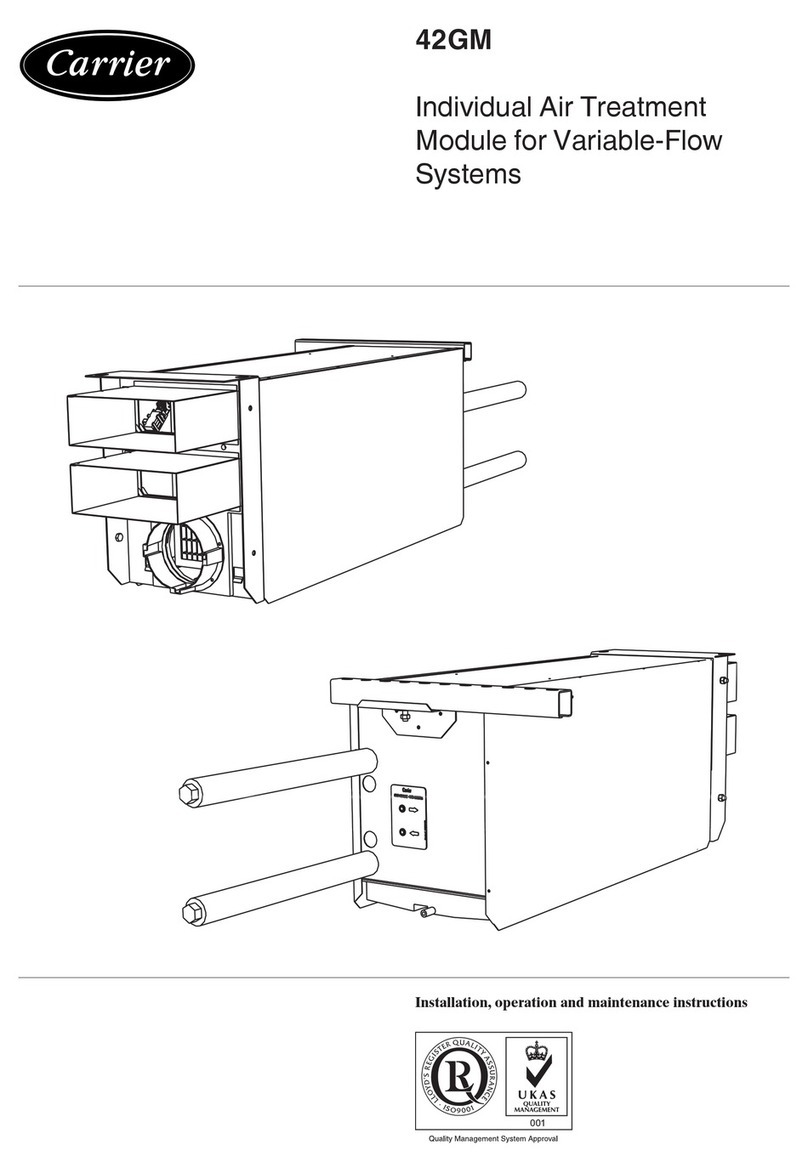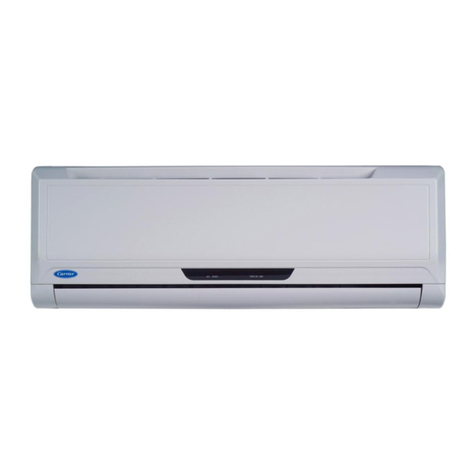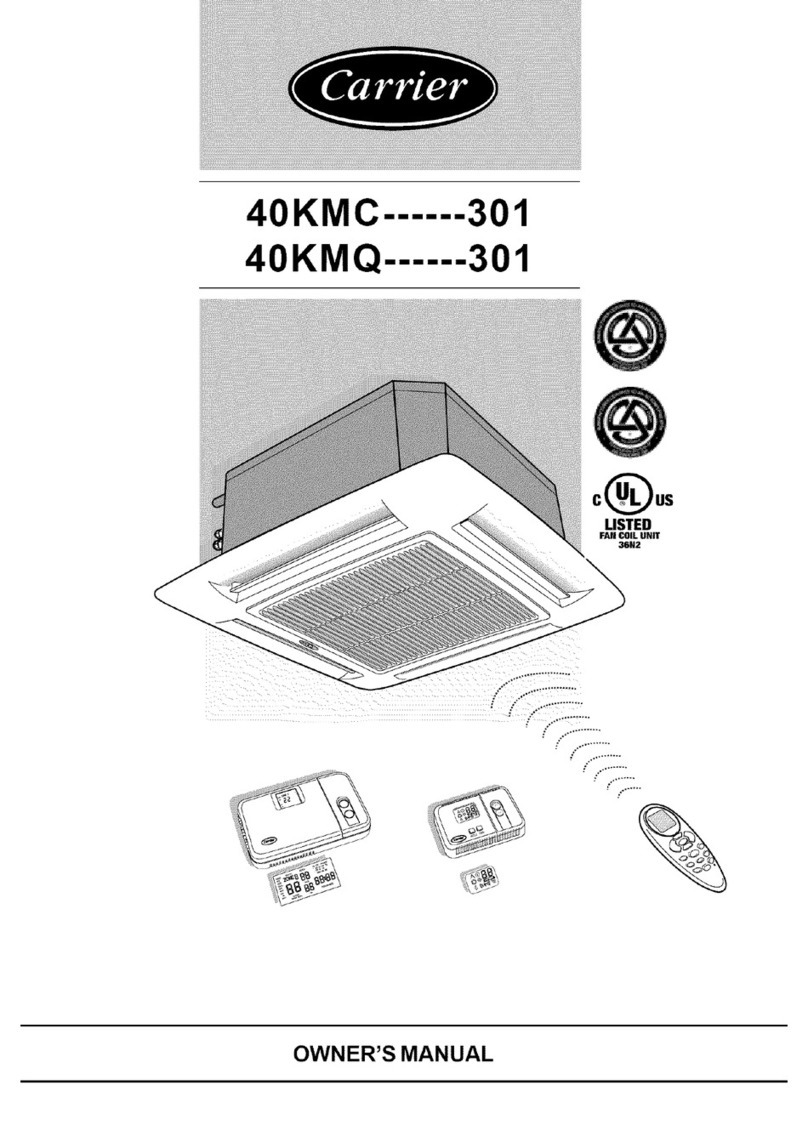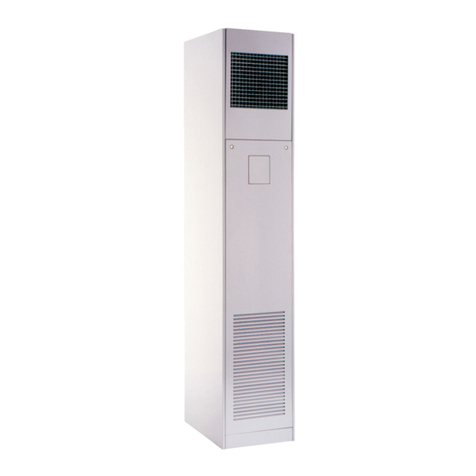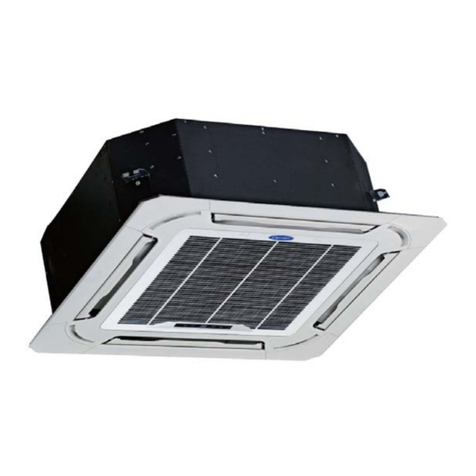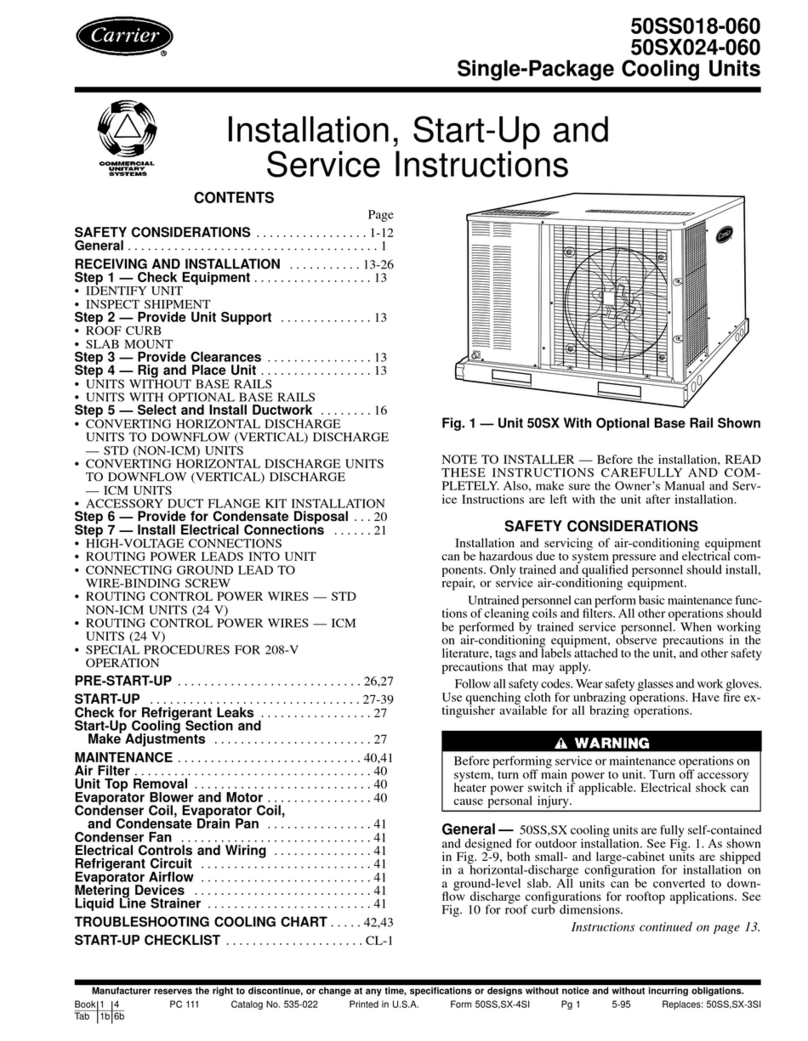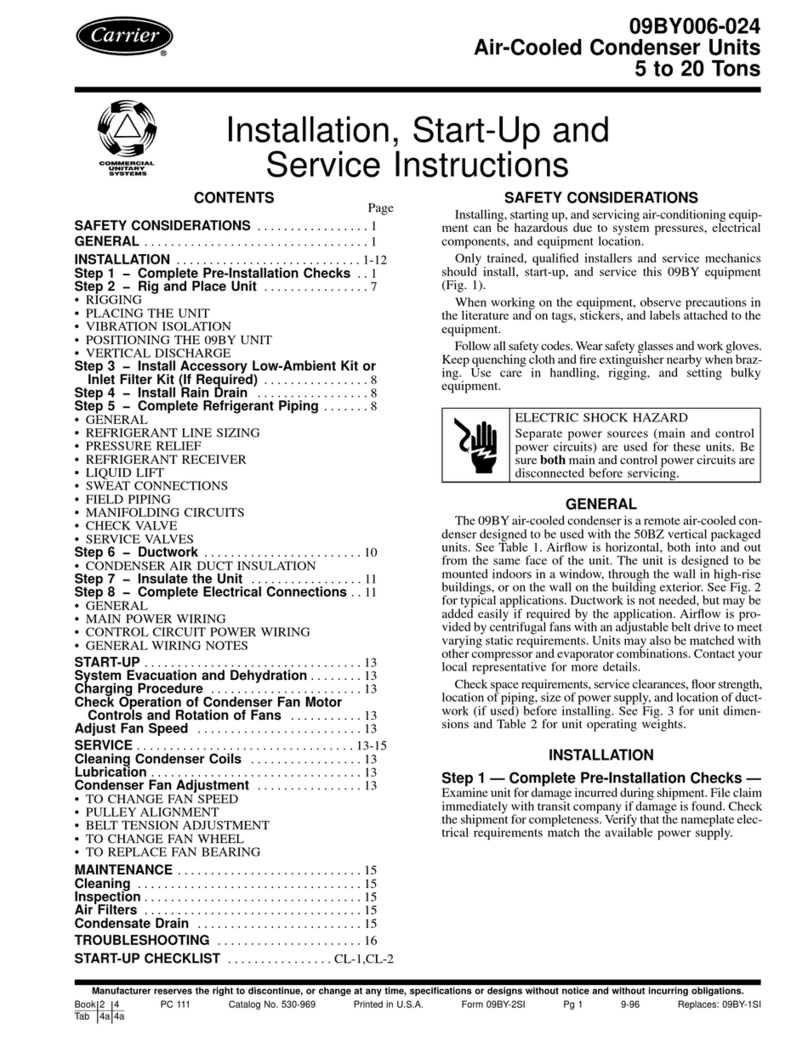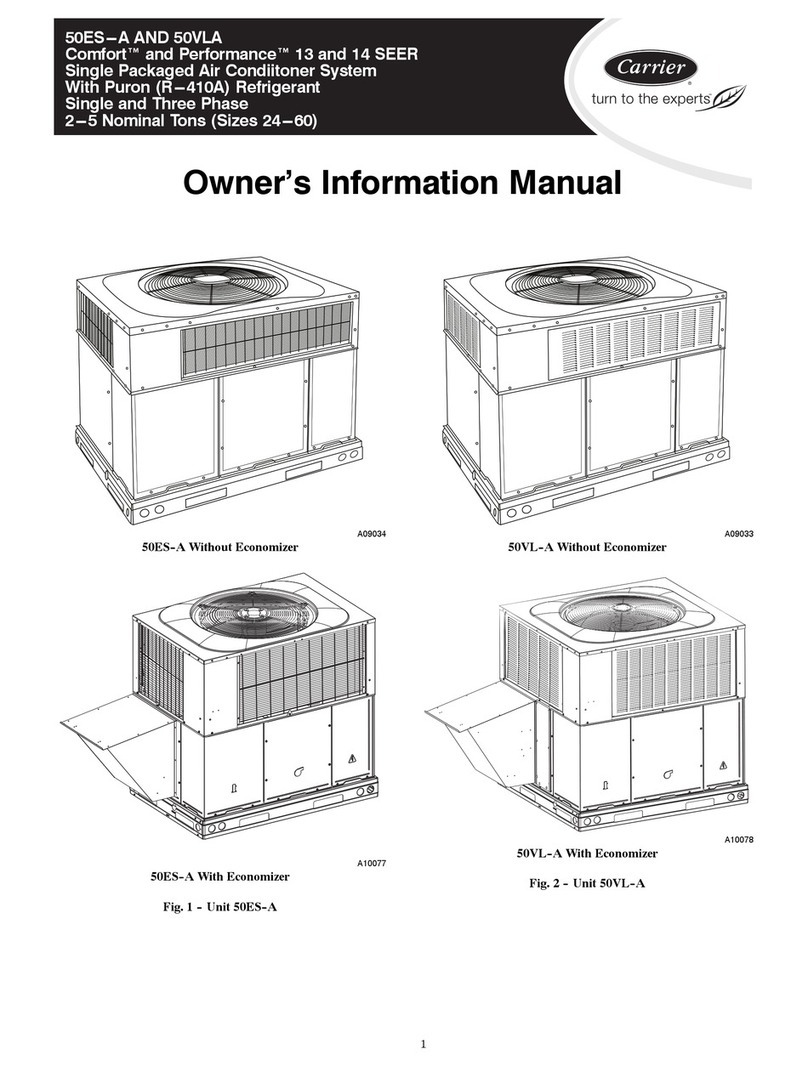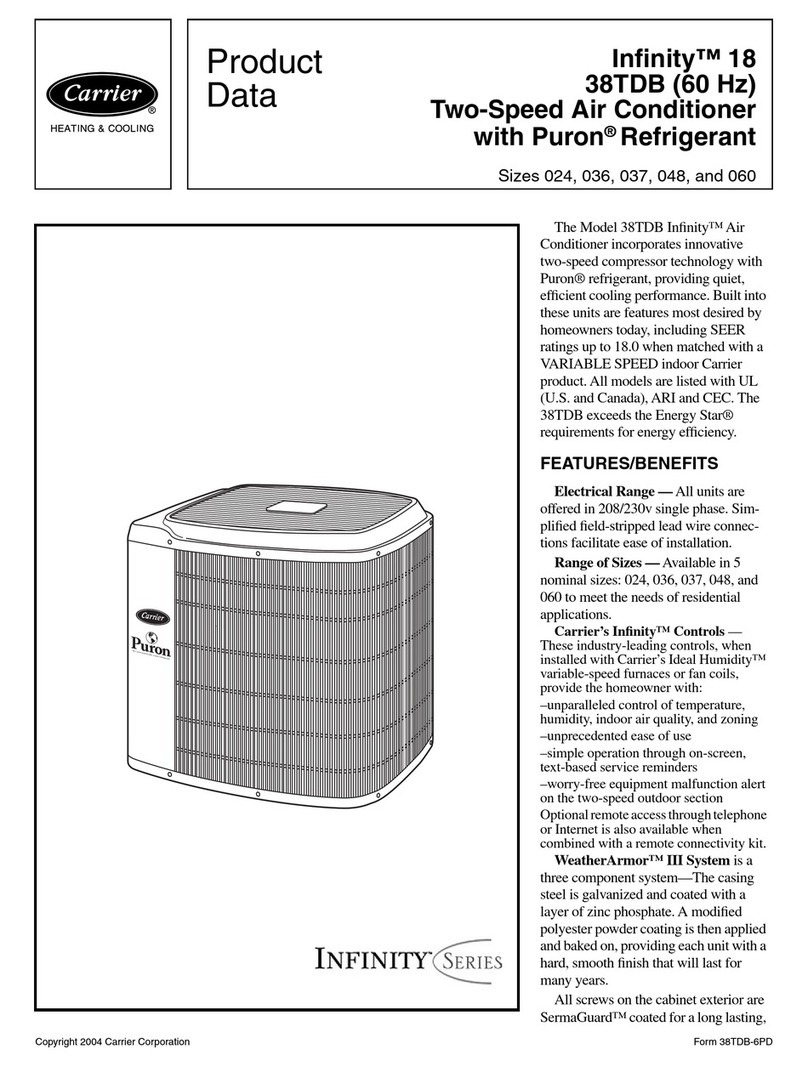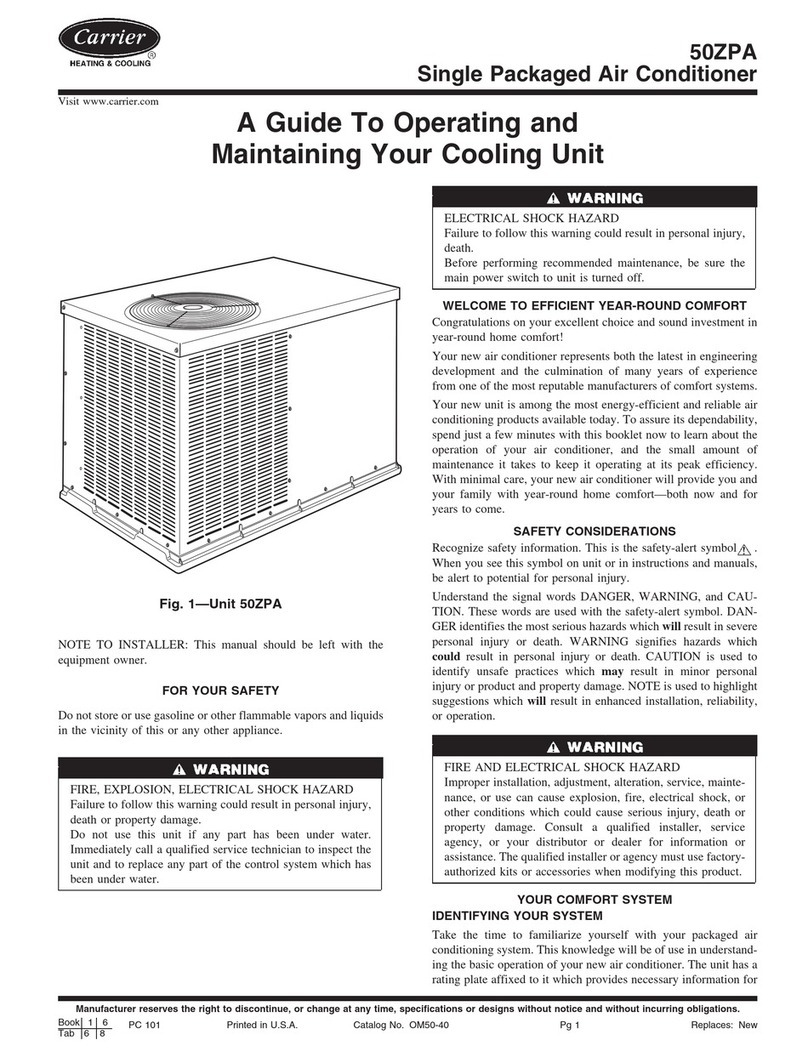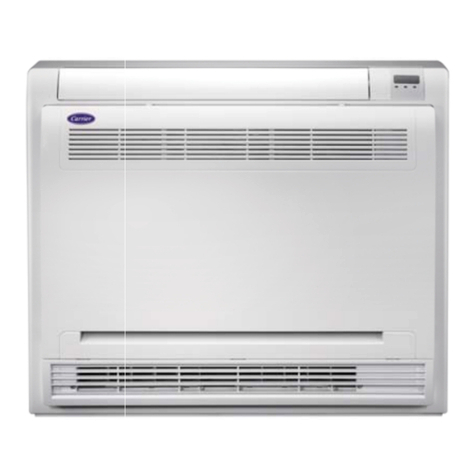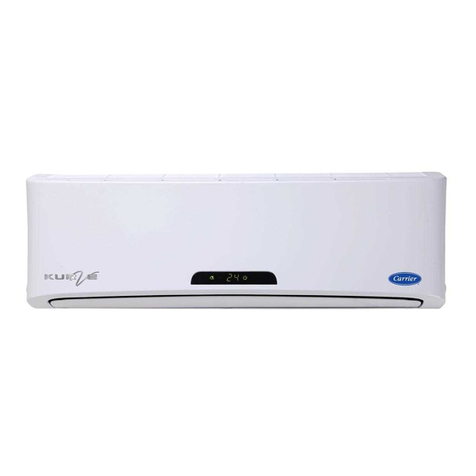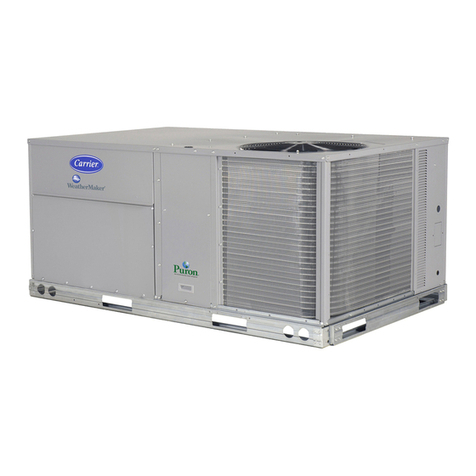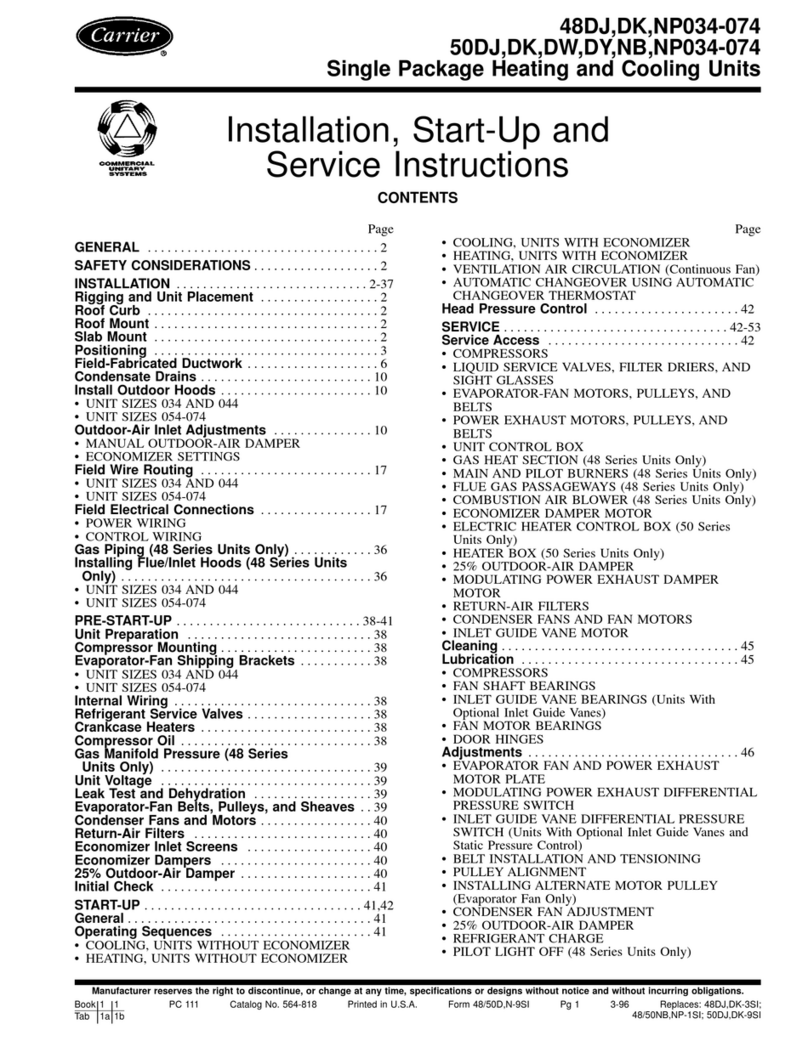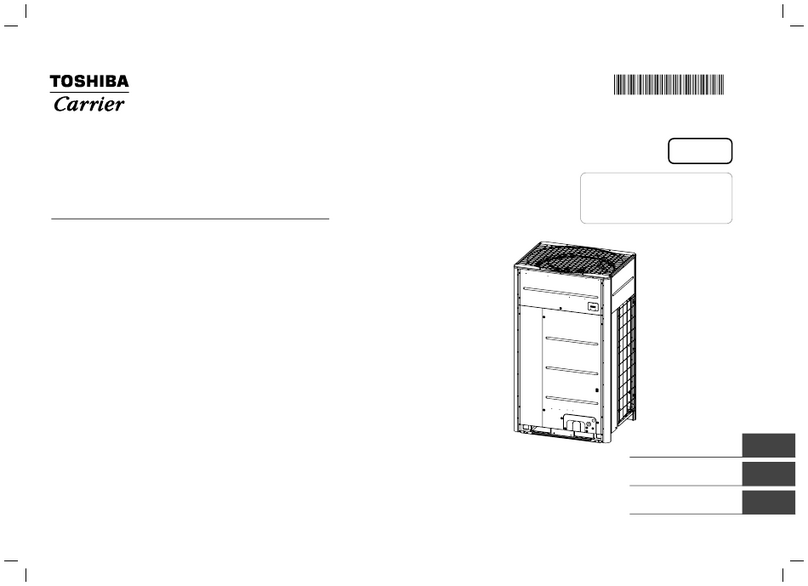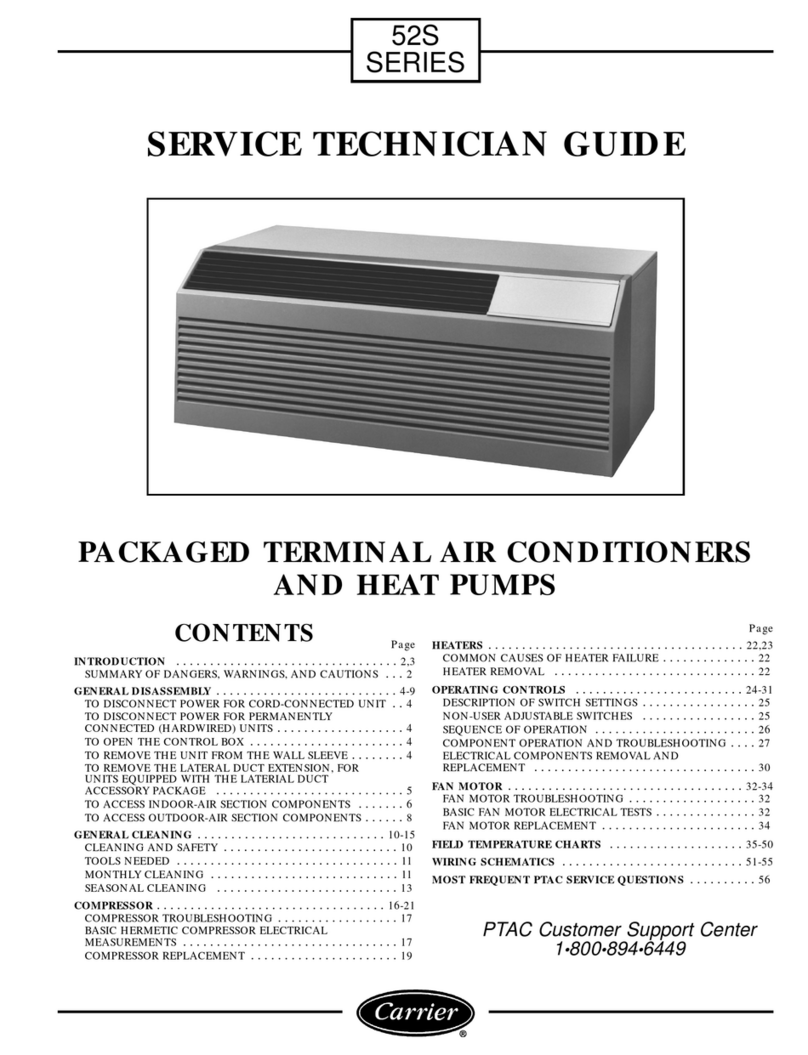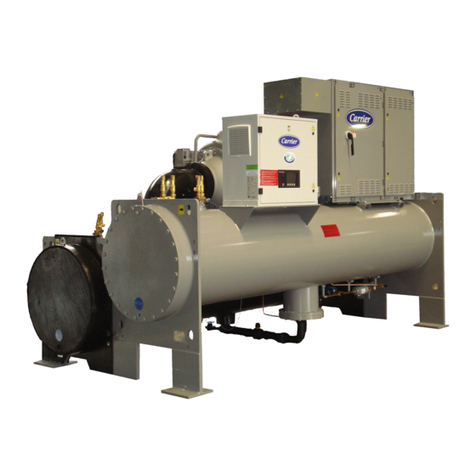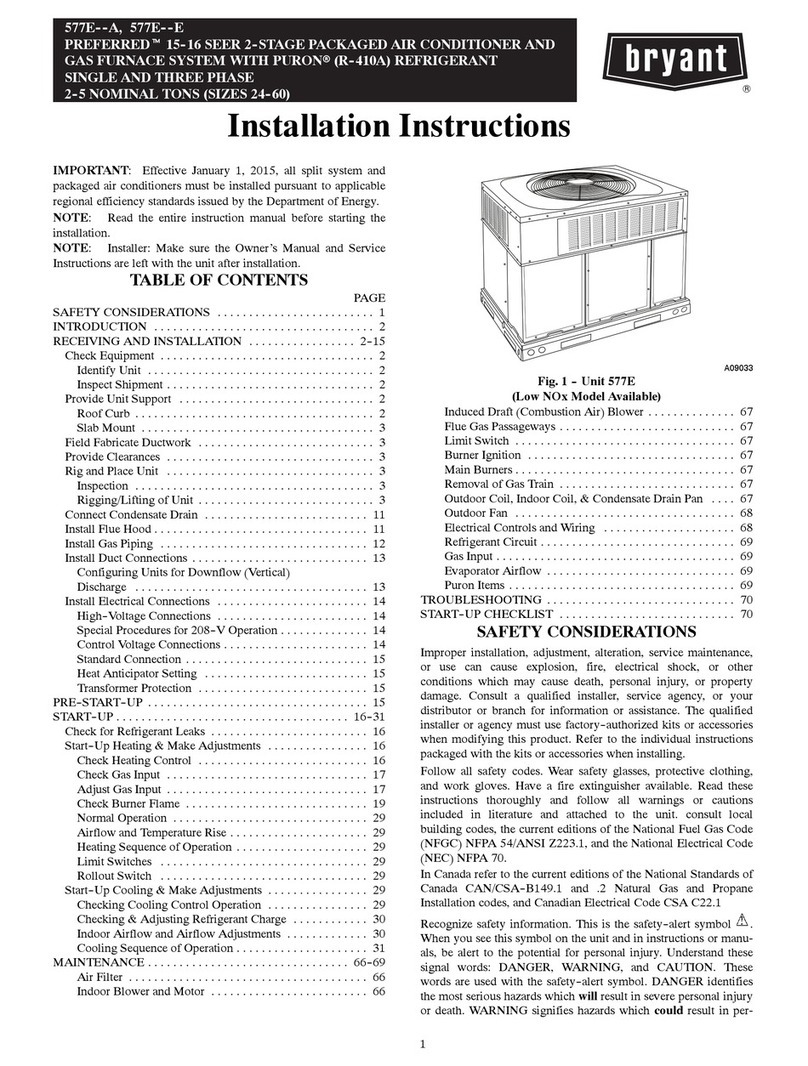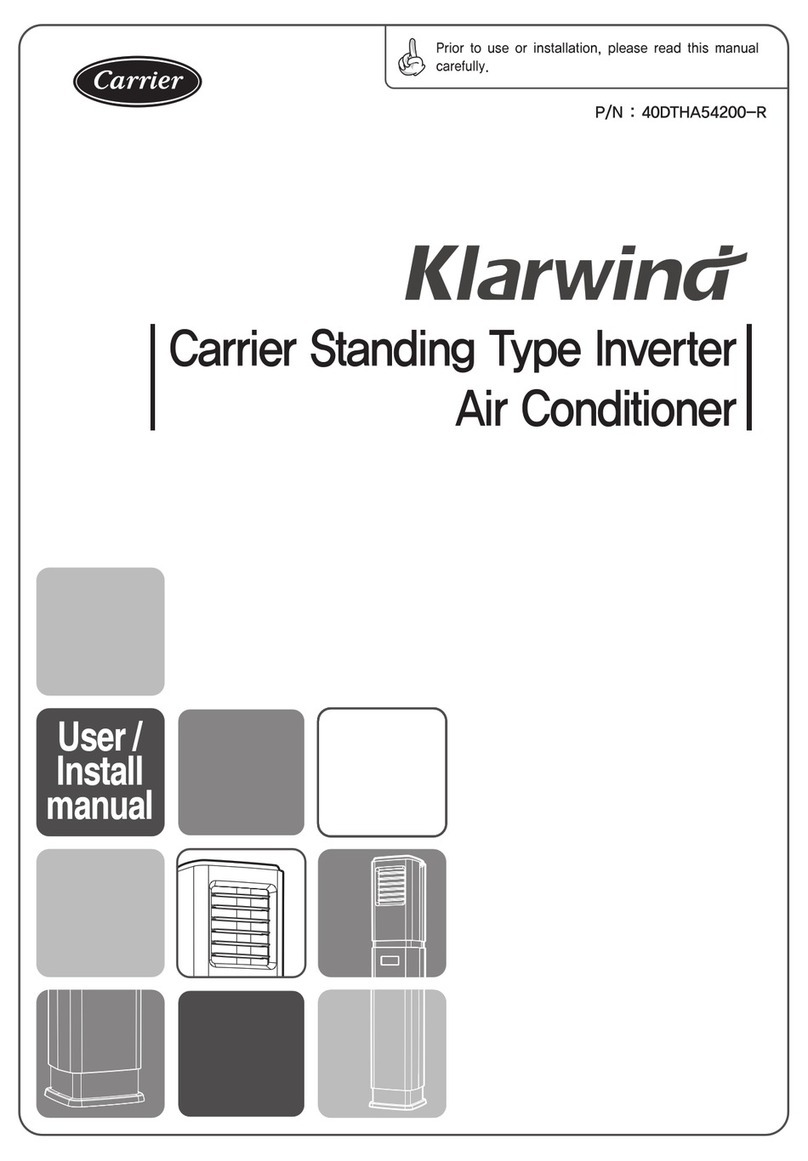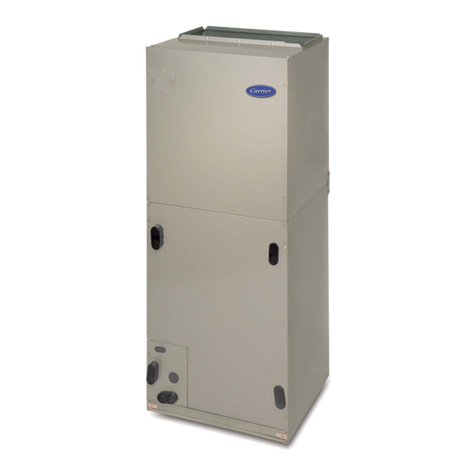damage.
maintenance.
or cause a fire.
It is not good for your health to expose your body to the
air flow for a long time.
carefully.
Failure to
to the
CONTENTS PAGE
6.MAINTENANCE
TROUBLES........5
8.TROUBLESHOOTING
Symptom 4: Noise of air conditioners cooling
Symptom 4.1: Indoor unit
When humidity is high during cooling operation If the interior of
an indoor unit is extremely contaminated, the temperature
distribution inside a room becomes uneven. It is necessary to
clean the interior of the indoor unit. Ask your dealer for details
on cleaning the unit. This operation requires a qualified service
person.
When the system is changed over to heating operation after
defrost operation Moisture generated by defrost becomes
steam and is exhausted.
A continuous low "shah" sound is heard when the system is in
cooling operation or at a stop.
When the drain pump (optional accessories) is in operation,this
noise is heard.
A "pishi-pishi" squeaking sound is heard when the system stops
after heating operation.
Expansion and contraction of plastic parts caused by
temperature change make this noise.
Symptom 4.2: Indoor unit, outdoor unit
A continuous low hissing sound is heard when the system is in
operation.
This is the sound of refrigerant gas flowing through both indoor
and outdoor units.
A continuous low hissing sound is heard when the system is in
operation.
This is the sound of refrigerant gas flowing through both indoor
and outdoor units.
A hissing sound which is heard at the start or immediately after
stopping operation or defrost operation.
This is the noise of refrigerant caused by flow stop or flow
change.
Symptom 4.3: Outdoor unit
When the tone of operating noise changes.
This noise is caused by the change of frequency.
The operation lamp is flashing rapidly (5Hz).
This lamp is still flashing rapidly after turn off the power and turn
on again. (See in Table 8-1)
Remote controller receives malfunction or the button does not
work well.
A safety device such as a fuse, a breaker frequently actuates.
Obstacles and water enter the unit.
Water leaks from indoor unit.
Other malfunctions.
8. TROUBLESHOOTING
If one of the following malfunctions occur, stop operation, shut
off the power, and contact with your dealer.
If the system does not properly operate except the above
mentioned cases or the above mentioned malfunctions is
evident, investigate the system according to the following
procedures. (See in Table 8-2)
8.1 Troubles and causes of air conditioner
Symptom 5: Dust comes out of the unit
Symptom 6: The units can give off odours
When the unit is used for the first time in a long time.
This is because dust has gotten into the unit.
The unit can absorb the smell of rooms, furniture, cigarettes,
etc., and then emit it again.
Symptom 7: The outdoor unit fan does not spin.
During operation. The speed of the fan is controlled in order to
optimize product operation.
8.2 Troubles and causes of remote controller
Before asking for serving or repairing, check the following points.
(See in Table 8-3)
7. FOLLOWING SYMPTOMS ARE NOT AIR
CONDITIONER TROUBLES
Symptom 1: The system does not operate
Symptom 2: Change into the fan mode during cooling
mode
Symptom 3: White mist comes out of a unit
The air conditioner does not start immediately after the ON/OFF
button on the romote controller is pressed.
If the operation lamp lights, the system is in normal condition.To
prevent overloading of the compressor motor, the air
conditioner starts 3 minutes after it is turned ON.
If the operation lamp and the "
PRE-DEF indicator(cooling and
heating type) or fan only indicator(cooling only type)"
light, it
means you choose the heating model, When just starting, if the
compressor has not started, the indoor unit appears "anti cold
wind" protection because of its overlow outlet temperature.
In order to prevent the indoor evaporator frosting, the system
will change into fan mode automatically, restore to the cooling
mode after soon.
When the room temperature drops to the set temperature, the
compressor goes off and the indoor unit changes to fan mode;
when the temperature rises up, the compressor starts again. It
is same in the heating mode.
Symptom 3.1: Indoor unit
Symptom 3.2: Indoor unit, outdoor unit
When humidity is high during cooling operation If the interior of
an indoor unit is extremely contaminated, the temperature
distribution inside a room becomes uneven. It is necessary to
clean the interior of the indoor unit. Ask your dealer for details
on cleaning the unit. This operation requires a qualified service
person
Table 8-1
NO. Malfunction timer lamp running lamp (flashes per second)
1
2
3
4
5
6
7
8
display (nixie tube)
Refrigerant leakage detection
malfunction
OFF
EC
Water-level alarm malfunction
8
EE
OFF
Outdoor room temperature sensor
open circuit or short circuit F1
2
Outdoor condenser pipe
temperature sensor error
3
4
5
ON
F2
E3
Indoor fan speed malfunction
OFF
E4
Indoor room temperature sensor
open circuit or short circuit
OFF
E5
Evaporator coil temperature
sensor open circuit or short circuit
OFF
E9
Other malfunction of twins model
OFF
9
Communication malfunction
between indoor and outdoor units
OFF
E1
10
11
12
13 Discharging air temperature
sensor error F3
Outdoor EEPROM error
F4
Communication malfunction
between two indoor units (for
twins model)
E8
OFF
F0
1
10
9
7
6
5
4
2
1
Current overload protection
Indoor EEPROM error E0
OFF
14
Solution
Clean the heat exchanger.
Clean the air filter.
Eliminate all dirties and make air
smooth.
Close doors and windows.
Make curtains in order to shelter from
sunshine.
Reduce heat source.
AC cooling capacity reduces (normal).
Symptoms Causes
Unit does not start
Air flowing normally but
completely can't cooling
Units start or stop frequently
Low cooling effect
Low heating effect
Power failure.
Power switch is off.
Fuse of power switch may have burned.
Batteries of remote controller exhausted
or other problem of controller.
Temperature is not set correctly.
Be in 3 minutes protection of
compressor.
Refrigerant is too little or too much.
Airor no concreting gas in the
refrigerating circuit.
Compressor is malfunction.
Voltage is too high or too low.
System circuit is blocked.
Wait for the comeback of power.
Switch on the power.
Replace the fuse.
Replace the batteries or check the
controller.
Set the temperature properly.
Wait.
Check leakage, and rightly recharge
refrigerant.
Vacuum and recharge refrigerant.
Maintenance or change compressor.
Install manostat.
Check leakage and rightly recharge
refrigerant.
Use heating device.
Close doors and windows.
Check leakage and rightly recharge
refrigerant.
Outdoor unit and indoor unit heat
exchanger is dirty.
The air filter is dirty.
Inlet/outlet of indoor/outdoor units is
blocked.
Doors and windows are open
Sunlight directly shine.
Too much heat resource.
Outdoor temp. is too high.
Leakage of refrigerant or lack of
refrigerant.
Outdoor temperature is lower than 7 C .
Doors and windows not completely
closed.
Leakage of refrigerant or lack of
refrigerant.
Table 8-2
Find reasons and solution.
15
16
17
18
19
20
21
22
23
24
25
Outdoor fan speed malfunction
(Only for DC fan motor)
T2b sensor error
F5
F6
6
7
Lifting panel malfunction F8
9
Lifting panel is not closed
10
1
2
ON
ON
ON
ON
ON
ON
ON
ON
ON
F9
Inverter module IPM protection P0
Flash
High/Low voltage protection
P1
Flash
F7
8
Lifting panel communication
checking channel is abnormal
High temperature protection of
compressor top
P2
3
Outdoor low temp. protection
P3
4
Compressor drive error
P4
5
Mode conflict
P5
6
Flash
Flash
Flash
Flash
Symptoms Causes
The fan speed can not be
changed.
Check whether the MODE
indicated on the display is
"AUTO"
Check whether the MODE
indicated on the display is
"DRY"
When the automatic mode is
selected, the air conditioner will
automatically change the fan
speed.
When dry operation is selected,
the air conditioner automatically
change the fan speed. The fan
speed can be selected during
"COOL" , "FAN ONLY",
and
"HEAT".
The remote controller signal is
not transmitted even when
the ON/OFF button is pushed.
Check whether the batteries
in the remote controller are
exhausted.
The power supply is off.
No receiving tone sounds
from the indoor unit even
when the ON/OFF button is
pressed.
Check whether the signal
transmitter of the remote
controller is properly directed
to the infrared signal receiver
of the indoor unit when the
ON/OFF button is pressed.
Directly transmit the signal transmitter
of the remote controller to the infrared
signal receiver of the indoor unit, and
then repeatly push the ON/OFF button
twice.
The indication on the display
disappears after a lapse of
time.
Check whether the timer
operation has come to an
end when the TIMER OFF
is indicated on the display.
The air conditioner operation will
stop up to the set time.
The TIMER ON indicator
goes off after a lapse of
certain time.
Check whether the timer
operation is started when
the TIMER ON is indicated
on the display.
Up to the set time, the air conditioner
will automatically start and the
appropriate indicator will go off.
The TEMP. indicator does
not come on.
Check whether the MODE
indicated on the display is
FAN ONLY
The temperature cannot be set during
FAN mode.
Solution
Table 8-3
INDOOR UNIT
OUTDOOR UNIT
1
2
3
4
5
6
7
8
9
10
11
12
Air flow louver(at air outlet) Air-in grill
Drain pump(drain water from indoor unit) Display panel
Drain pipe Remote controller
Air outlet Refrigerant pipe
Air filter(inside air-in grill) Air inlet
Air inletAir inlet Air outlet
3
9
10
11
11
12
All the pictures in this manual are for explanation purpose only. They may be slightly different from the air
conditioner you purchased(depend on model).The actual shape shall prevail.
NOTE
1
5
7
8
2
4
6
Fig.1
RESET
TIME ON
TIME OFF
CLOCK
SWING
AIRDIRECTION
OK
ECO
SWING
MODE FAN
SPEED
M
LOCK
C/H
AUTO
COOL
DRY
HEAT
FAN
TEMP
SET
CLOCK
SET
HOUR
FANSPEED
